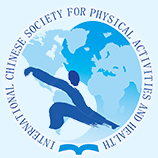Document Type
Abstract
Publication Date
2-2024
Abstract
Purpose: The development of Healthy Physical Education Curriculum Model of China (HPE-C) was aimed for students’ physical and mental health. Some studies have proved that the application of HPE-C can effectively improve Chinese primary and secondary school students' physical fitness. However, the results of these studies were not uniform due to the differences in intervention methods, experimental periods, and regions. Consequently, the purpose of this study was to specifically synthesize the evidence for HPE-C for Chinese primary and secondary school students’ physical fitness. Methods: An extensive online search, utilizing keywords such as 'Healthy Physical Education Curriculum Model of China,' 'Primary school,' 'Middle school,' 'High school,' 'Application effect,' and 'Experimental study,' yielded over 80 published studies within the past 7 years. The databases employed for the search included CNKI, CQVIP, and the WanFang database. The eligibility criteria required that the research: (a) had full-text availability, (b) involved primary and secondary students aged 7-18 years in China, (c) conducted a randomized controlled trial or quasi-experiment, and (d) reported essential parameters such as sample size, mean difference, and standard deviation. Since the outcome measures were continuous variables, mean difference or standardized mean difference was utilized. Effect sizes, along with 95% confidence intervals, were calculated using Review Manager 5.4 software, and the heterogeneity among effect sizes was assessed through I² statistics. Results: A total of 81 studies and articles were considered for inclusion and 11 studies qualified for this review. Seven studies used 50-meter running to test the speed quality of students, had an effect size of -0.24, 95%CI[-0.30,-0.18], Z=7.73 (p < 0.00001). Five studies used sit and reach to test the flexibility quality of students, had an effect size (mean difference) of 0.59, 95%CI[-0.03,1.20],Z=1.87(p=0.06). Four studies used stand long jump to test the strength quality of students with an effect size (mean difference) of 4.66, 95%CI[2.16,7.17], Z=3.65(p=0.0003). Five studies tested the student’s endurance quality with 1000-meter running for male students and 800-meter running for female students, had an effect standardized mean difference of -12.56, 95%CI[-20.47,-4.65], Z=3.11(p=0.002). Conclusions: This meta-analysis shows that the application of HPE-C had an significant effect on the speed, strength and endurance of Chinese primary and secondary school students, but the effects on flexibility is not significant. Teachers should attach importance to the exercise of students' flexibility in order to promote the all-round development of students' physical fitness when applying HPE-C.
DOI
https://doi.org/10.18122/ijpah.3.1.31.boisestate
Recommended Citation
Tang, Jiacheng; Liu, Haohui; Yin, Zhihua; and Wang, Sixian
(2024)
"A112: Effects of Healthy Physical Education Curriculum Model of China on Student Physical Fitness: A Meta-Analysis,"
International Journal of Physical Activity and Health: Vol. 3:
Iss.
1, Article 31.
DOI: https://doi.org/10.18122/ijpah.3.1.31.boisestate
Available at:
https://scholarworks.boisestate.edu/ijpah/vol3/iss1/31
Included in
Exercise Science Commons, Health and Physical Education Commons, Public Health Commons, Sports Studies Commons


